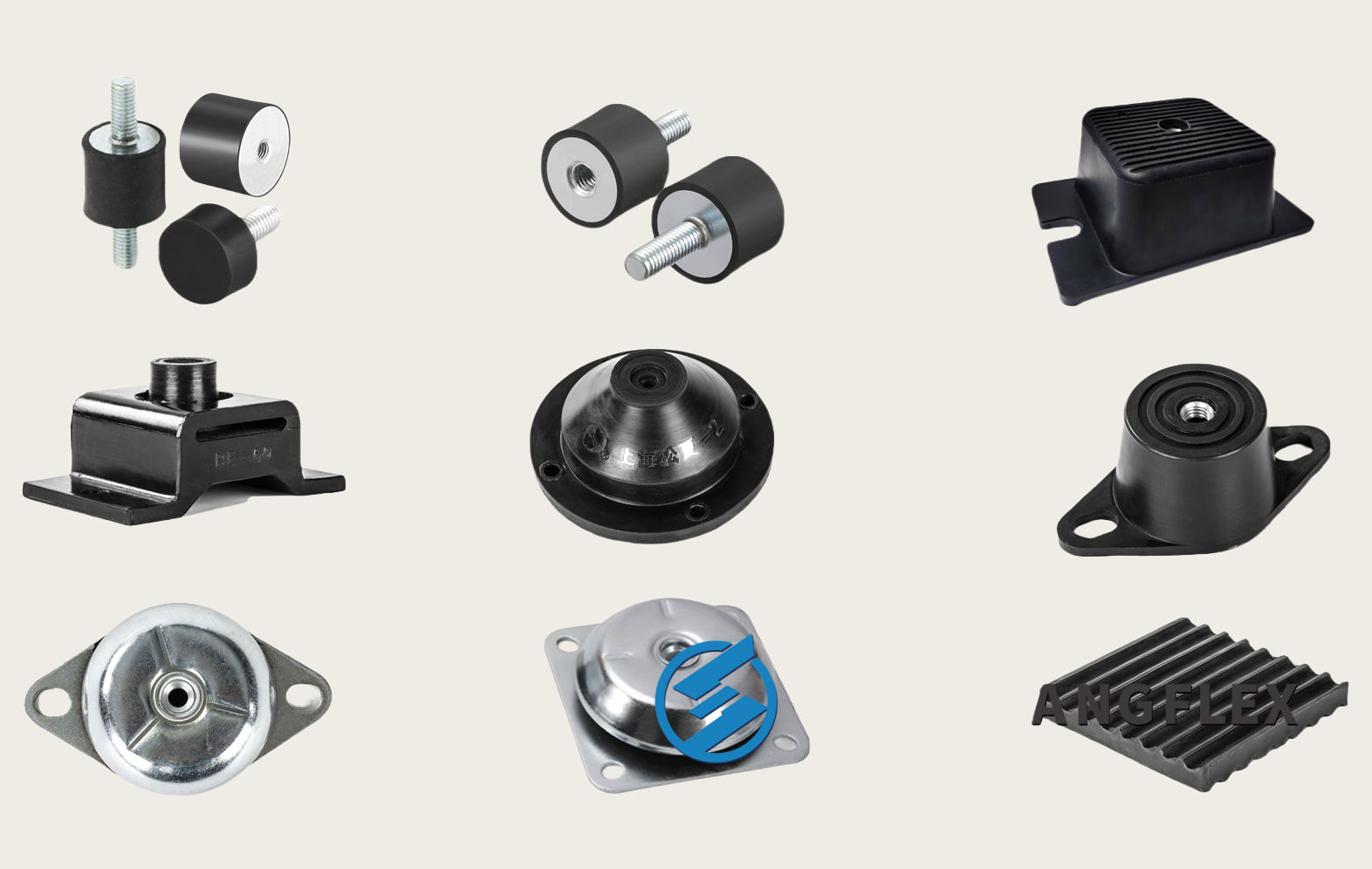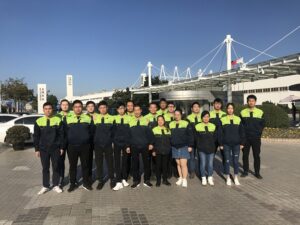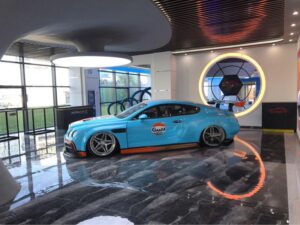Why Are Rubber Vibration Isolators So Important in Modern Industry?
Vibration issues affect many industrial machines, causing noise, accelerated wear, and even damage, which seriously impacts equipment stability and lifespan. Rubber vibration isolators offer an efficient, cost-effective, and low-maintenance solution widely adopted in industry to control vibration, reduce noise pollution, improve equipment performance, and enhance safety.
Rubber vibration isolators leverage superior rubber material properties and smart design to significantly reduce equipment vibration, extend service life, improve overall industrial production safety, and lower maintenance and downtime costs. This makes them indispensable components in modern industrial vibration control systems.
Let’s dive deeper into how rubber vibration isolators work and why they are so critical.
What Are Rubber Vibration Isolators and How Do They Work?
Rubber vibration isolators are elastic components made from specially formulated rubber compounds designed to absorb and dissipate mechanical vibrations. By converting kinetic energy into heat, they prevent vibration transmission between machinery and supporting structures.
They effectively isolate equipment from vibration and shocks, protecting mechanical structures and reducing noise caused by vibration. Their simple installation and adaptability make them widely used in mechanical, electronic, and construction industries.
How Do Rubber Vibration Isolators Effectively Reduce Equipment Vibration?
The core of rubber vibration isolators lies in the elasticity and damping properties of the rubber material. When equipment operates and produces vibration, these isolators deform under dynamic loads, absorbing energy that would otherwise cause harmful oscillations.
Rubber converts mechanical energy into heat, greatly reducing vibration intensity and transmission. As a result, equipment runs more smoothly and quietly, minimizing adverse effects on the machine and surrounding environment.
What Impact Does Using Rubber Vibration Isolators Have on Equipment Lifespan?
Continuous vibration causes wear, loosening, and fatigue in equipment components, shortening lifespan. Rubber vibration isolators effectively isolate and absorb vibration, substantially reducing mechanical stress and fatigue effects.
This lowers failure rates and maintenance frequency, improves operational efficiency, and extends maintenance intervals—saving significant repair and replacement costs for businesses.
What Advantages Do Rubber Vibration Isolators Have Compared to Other Vibration Damping Materials?
Compared with metal springs or hard damping materials, rubber vibration isolators offer superior damping performance and better corrosion resistance, requiring less maintenance. The inherent elasticity and hysteresis of rubber make it excellent for absorbing vibrations over a wide frequency range.
Additionally, rubber isolators are lightweight, easy to install, and maintain stable performance in harsh environments like high temperature, oil exposure, and humidity. Their customization options allow tailoring rubber compounds and designs to meet specific industrial vibration control needs.
How Do Different Types of Rubber Materials Influence the Performance of Vibration Isolators?
Rubber material properties such as hardness, elasticity, chemical resistance, and temperature tolerance directly impact isolator performance.
Natural rubber provides excellent elasticity and abrasion resistance suitable for general industrial use. Neoprene offers oil and chemical resistance ideal for oily environments. EPDM excels in weather resistance for outdoor or high-temperature applications, while silicone rubber suits extreme temperature conditions.
Choosing the right rubber compound ensures durability and consistent vibration reduction in the intended operating environment, preventing performance degradation due to material aging.
How Much Does the Design of Rubber Vibration Isolators Affect Their Vibration Reduction Performance?
Design greatly influences stiffness and damping characteristics. Factors include geometry (cylindrical, block shapes), rubber thickness, internal cavities, and metal support structures.
Well-engineered designs balance load-bearing capacity and energy absorption, achieving optimal vibration isolation without compromising equipment stability. Poor design can lead to insufficient vibration reduction or instability.
In Which Industrial Equipment Are Rubber Vibration Isolators Most Commonly Used?
Rubber vibration isolators are widely used in HVAC systems (fans, air conditioning units), pumps, compressors, diesel generators, stamping machines, power test benches, transformers, and more.
Their versatility makes them essential across industries such as petroleum, chemical, metallurgy, electric power, construction, and thermal energy.
How Do Rubber Vibration Isolators Improve Safety in Industrial Production?
Excessive vibration can cause mechanical loosening, structural fatigue, and unexpected failures, posing safety risks. Rubber isolators reduce vibration levels, minimizing component loosening and decreasing accident likelihood.
They also reduce noise pollution, creating a safer and more comfortable working environment. Overall, they play a key role in ensuring industrial production safety.
What Are the Maintenance and Replacement Cycles for Rubber Vibration Isolators in Modern Industry?
Rubber isolators typically have a long service life but can degrade due to aging, cracking, or hardening depending on environment and load. Regular inspections of surface condition, elasticity, and mounting integrity are essential.
Professional checks every 1-3 years are recommended, with replacement based on wear and fatigue signs. Proper maintenance ensures ongoing vibration control and prevents unexpected equipment damage.
Thanks to their excellent vibration reduction, extended equipment lifespan, and safety enhancement, rubber vibration isolators have become core components in modern industry.






